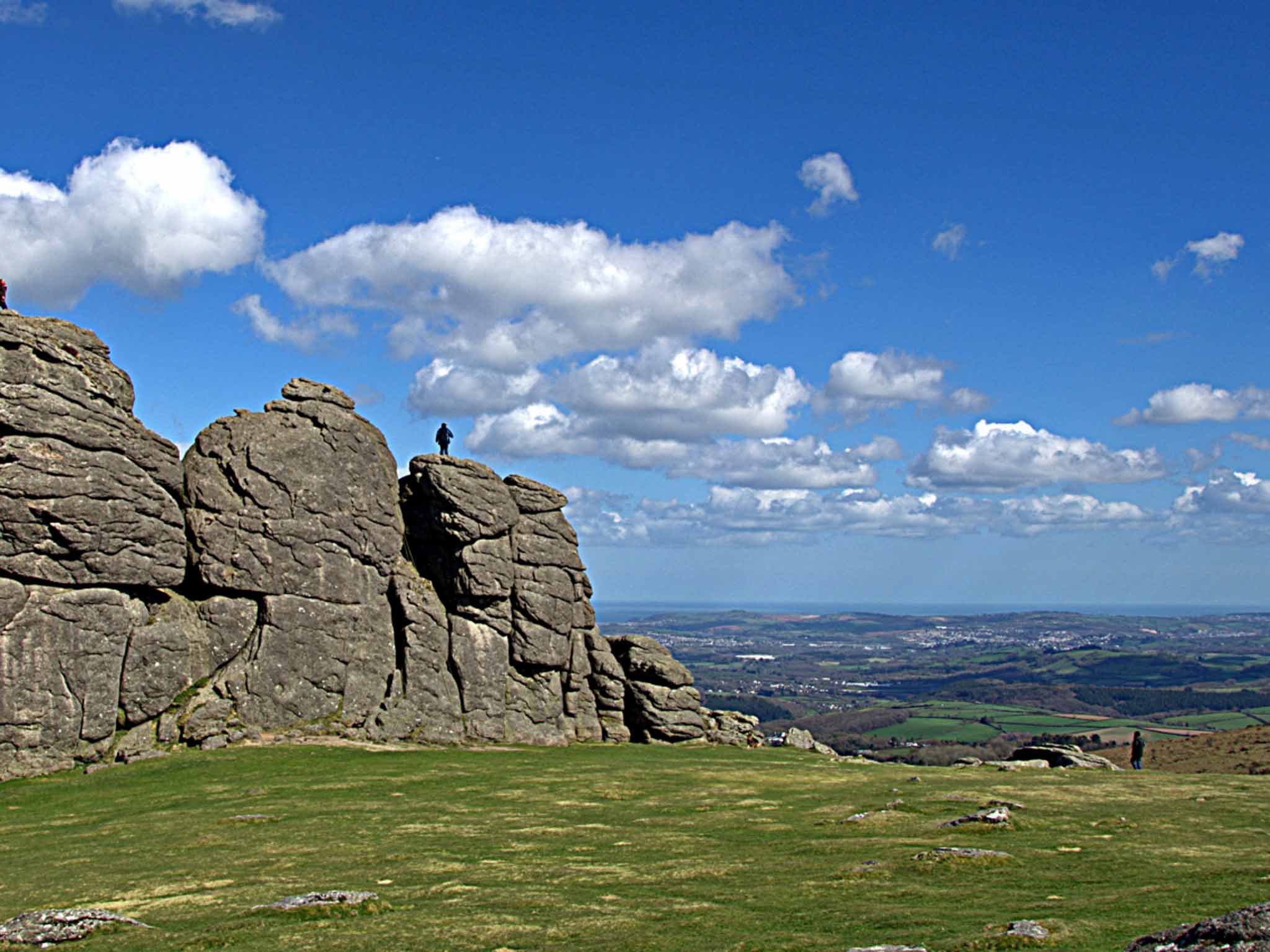Dartmoor: granite tors, cream teas and a prison
From magnificent views to the grounds of HM Prison Dartmoor, Harriet O'Brien experienced the lot

A hundred gnomes were grinning, pouting and winking. They lined steps, they covered shelves, and they made a curious counterpoint to the rather sober circumstances of their setting. They – and I – were at the shop-cum-museum at Dartmoor Prison. Retailing at from £3, the gnomes are made by the inmates.
I was on a guided tour of one of England's least hospitable regions. The 'Ultimate Dartmoor' day out has been devised by Unique Devon Tours, an outfit launched last year by local enthusiast Alex Graeme. It is designed to show visitors the essence of this dramatic area without involving hard-core exercise, and it takes in granite tors, legends and ancient sites, and even a cream tea, as well as one of Britain's most notorious penitentiaries. The excursion was arranged through my hotel, Ilsington Country House, which is keen for guests to gain an insider's sense of the locality.
I arrived in sunshine on a perfect evening, the Ilsington standing bathed in soft light on wide lawns. From this clearing, the outlook over a patchwork of pastoral England is magnificent. Built as a convalescence home in the 1890s, the Ilsington is now a 26-bed hotel with an old-time, rambling feel. There are free-range eggs for sale at reception, cosy nooks and fireplaces, swirly carpets along corridors. I feasted on smoked fish, marvelled at the panorama from the terrace, and turned in with images of postcard-pretty Devon in my head. I woke to grey skies and drizzle.
"Perfect conditions for Dartmoor – you'll see it at its best," said Alex as he picked me up. We headed for open moorland down dauntingly narrow lanes. First stop Haytor, a few miles from the Ilsington yet a wild landscape apart. This granite outcrop stands 1,500ft above sea level. It's the defining image of Dartmoor, said my guide: you see it from miles away.
Driving on, we passed the weirdly shaped rocks of Hound Tor (local lore has it that a Dartmoor witch turned a huntsman and his dogs to stone at this spot) and we stopped at a grassy grave beside the road.
As I gazed at a bizarre collection of plastic posies, dolls and coins on the mound, Alex recounted the legend of Jay's Grave. The story goes that an 18th-century workhouse orphan was taken on as a maid at nearby Canna Farm. She became pregnant by the farmer's son, was dismissed and, in despair, committed suicide. Although she was buried at a crossroads so that her spirit would not haunt the area, strange things happen there, even now. Until recently, fresh flowers appeared on the grave every morning, said Alex, adding with a grin that he knew the local eccentric who put them there.
We wound on to one of Dartmoor's most remarkable sites, a moor liberally dotted with the remains of Bronze Age settlements, among which probably the finest is Grimspound – 24 hut circles (the remains of little round houses).
Onwards to jail. HM Prison Dartmoor and outlying Princetown are the highest settlements on the moor. Indeed, they were engulfed in mist as we approached. Alex, quoting the local adage that if you can see Princetown's transmitting mast it's going to rain; if you can't, it is raining.
We sloshed up to the museum, just west of the jail. Casual visitors can't go into the prison but if you take a guided tour at the museum, you are escorted to two memorial sites within the jail enclosure.
Established in 1806, the site was originally used to hold prisoners of war – first French soldiers from the Napoleonic wars, and later Americans from the War of 1812 – and the two memorials are to those of them who died here. It became a centre for convicted criminals in 1850 and, because of its bleak position, housed high-security prisoners. In 1987, it was classified as a Grade II listed building, which stymied security alterations, and in 2001 it was downgraded to Category C, the lowest grade of closed prison.
It was grimly fascinating to learn about the methods of punishment in the past, with displays featuring everything from a flogging frame to smuggled-in items such as knuckle-dusters.
We pondered the future, too. Dartmoor prison is due to close by 2018, with the inmates being moved to newly built centres elsewhere. What will happen to the site and to Princetown, which largely grew up to serve the jail? The facility itself, and much of the surrounding area, is owned by the Duchy of Cornwall, which has yet to reveal its plans. We speculated that maybe it will become a hotel (joining the ranks of prison hotels in Oxford, Helsinki, Istanbul and Boston). Or perhaps a theme park? Or maybe a centre for adventure holidays?
Getting there
The closest rail stations to Dartmoor are at Exeter, Newton Abbot, Totnes, Ivybridge and Plymouth.
Staying there
The Ilsington Country House Hotel is in Ilsington Village, near Newton Abbot, Devon (01364 661452; ilsington.co.uk). Double rooms in the hotel cost from £110, which includes breakfast.
Visiting there
The "Ultimate Dartmoor" day tour with Unique Devon Tours (01803 812556; uniquedevontours.com) costs £260 for up to six people. The Dartmoor Prison Museum (01822 322130; dartmoor-prison.co.uk) is open daily; tickets for adults cost £3.50.
More information
Subscribe to Independent Premium to bookmark this article
Want to bookmark your favourite articles and stories to read or reference later? Start your Independent Premium subscription today.

Join our commenting forum
Join thought-provoking conversations, follow other Independent readers and see their replies